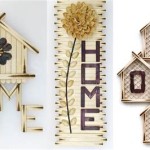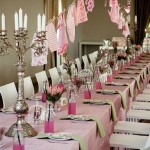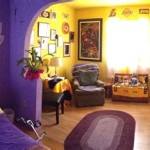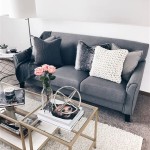How To Decorate One Room: A Comprehensive Guide
Decorating a single room can feel like a daunting task, but with careful planning and a methodical approach, the process can be streamlined and enjoyable. Whether aiming for a complete overhaul or a subtle refresh, understanding the fundamental principles of interior design is crucial for achieving a cohesive and aesthetically pleasing space. This article will provide a detailed guide on how to decorate a single room, covering key considerations from initial planning to final touches.
The first step in decorating any room involves a thorough assessment of the existing space. This includes noting the room's dimensions, natural light sources, architectural features, and any existing furniture or decor that will remain. Understanding these elements will inform subsequent decisions regarding color palettes, furniture selection, and layout strategies.
Consider the purpose of the room. Is it a living room designed for relaxation and socializing, a bedroom intended for restful sleep, or a home office geared towards productivity? The intended function will significantly influence design choices. A living room, for example, might require ample seating and a focal point for entertainment, while a bedroom will prioritize comfort and tranquility.
Defining the Room's Purpose and Style
Before embarking on any physical changes, it is essential to clearly define the room's intended purpose. This clarity will serve as a guiding principle throughout the decoration process. For instance, a multipurpose room, such as a living room that also serves as a home office, will require a more flexible design approach compared to a single-purpose space.
Once the purpose is established, determining the desired style is the next critical step. Interior design styles are diverse, ranging from traditional and minimalist to modern and bohemian. Researching different styles and identifying elements that resonate with personal preferences is vital. Consider gathering inspiration from magazines, online resources, and real-life examples.
Traditional style often incorporates rich colors, ornate details, and classic furniture pieces. Minimalist design, on the other hand, emphasizes clean lines, neutral palettes, and functional furniture. Modern design prioritizes sleek aesthetics, geometric shapes, and innovative materials. Bohemian style embraces eclecticism, incorporating vibrant colors, patterns, and textures from various cultures.
It's important to remember that personal taste should be the ultimate guide. Feel free to blend elements from different styles to create a unique and personalized space. However, maintaining a consistent theme is crucial for achieving a cohesive look. Avoid incorporating too many conflicting styles, which can result in a cluttered and disjointed appearance.
Documenting the chosen style and purpose in a written plan or mood board can be extremely helpful. This visual aid will serve as a reference point throughout the decoration process, ensuring that all decisions align with the overall vision.
Creating a Cohesive Color Palette
Color plays a pivotal role in shaping the mood and ambiance of a room. A well-chosen color palette can enhance the space's aesthetic appeal and create a sense of harmony. Selecting a color palette involves considering the psychological effects of different colors and how they interact with each other.
Start by choosing a dominant color for the walls. Neutral colors such as white, beige, and gray are versatile choices that provide a blank canvas for incorporating other colors. These neutral walls serve as a backdrop that allows furniture and accessories to stand out.
Next, select two to three accent colors to complement the dominant color. Accent colors can be used in furniture, textiles, and decorative accessories. Consider using the 60-30-10 rule, which suggests allocating 60% of the room to the dominant color, 30% to a secondary color, and 10% to an accent color. This rule provides a balanced and visually appealing color distribution.
Consider the room's natural light when selecting colors. Darker colors tend to make a room feel smaller and more intimate, while lighter colors can brighten up a space and create a sense of openness. In rooms with limited natural light, opt for lighter and brighter colors to maximize illumination.
Color psychology can also inform color choices. Blue is often associated with calmness and tranquility, making it a suitable choice for bedrooms. Green is associated with nature and serenity, making it a good option for living rooms and home offices. Yellow is associated with energy and optimism, but it should be used sparingly as an accent color.
Before committing to a specific color palette, test different colors in the room. Purchase small sample pots of paint and apply them to different areas of the wall. Observe how the colors look under different lighting conditions throughout the day. This will help in making an informed decision and avoid costly mistakes.
Selecting Furniture and Arranging the Layout
Furniture selection is a critical aspect of room decoration. The size, style, and functionality of furniture pieces should be carefully considered to ensure they complement the room's overall aesthetics and purpose. Proper furniture arrangement is equally important for creating a comfortable and functional space.
Start by identifying the essential furniture pieces for the room based on its intended function. In a living room, this might include a sofa, armchairs, a coffee table, and a television stand. In a bedroom, it might include a bed, bedside tables, a dresser, and a wardrobe. Prioritize functionality and choose pieces that meet the specific needs of the room.
Consider the scale of the furniture in relation to the room's dimensions. Avoid overcrowding the space with too many large pieces. In smaller rooms, opt for smaller, more streamlined furniture. In larger rooms, larger furniture pieces can be used to create a more grounded and balanced look.
The layout of furniture should promote flow and functionality. Create a focal point in the room, such as a fireplace or a large window, and arrange the furniture around it. Ensure that there is ample space for movement and that pathways are clear and unobstructed.
Consider the placement of furniture in relation to natural light sources. Avoid blocking windows with furniture that can obstruct natural light. Position seating areas to take advantage of natural light for reading or relaxation.
The use of area rugs can help define different zones within a room and add visual interest. Place a large area rug under the main seating area in a living room or under the bed in a bedroom. Choose rugs that complement the room's color palette and style.
Don't be afraid to experiment with different furniture arrangements until finding the optimal layout. Consider using online room planning tools or apps to visualize different arrangements before moving heavy furniture. These tools allow for experimenting with various layouts without the physical effort of rearranging furniture.
Consider the use of multi-functional furniture pieces, especially in smaller spaces. A sofa bed, for example, can provide additional sleeping space for guests. Storage ottomans can offer both seating and storage. These multi-functional pieces maximize space and provide added convenience.
Ultimately, the furniture selected needs to reflect the room's style and personal taste. From upholstery fabrics to wood finishes, the features chosen must align with the overall design concept. Consider visiting furniture showrooms and gathering samples to help make informed decisions.

Amazing One Room Apartments That You Will Have To See Studio Interieur Decoratie Klein Appartement Wonen

15 Ideas Of Minimalist And Simple One Room Apartment Decoratoo Deco Petit Appartement Idée Déco étudiant

10 Small One Room Apartments Featuring A Scandinavian Décor

Simple And Modern Single Room Design Ideas That Will Blow Your Mind Small Bedroom Decor Layouts Interior

20 Single Room Decoration Ideas Find Inspiration Here Yen Com Gh

10 Small One Room Apartments Featuring A Scandinavian Décor

Interior Design Ideas For Apartments

Extreme Single Room Makeover Arranging And Decorating A To Look Like Bedsitter

One Room Flat Decorating Ideas Off 72 Yellowpages Org In

10 Tips To Decorate Your Small Self Contained Bedroom In
Related Posts







